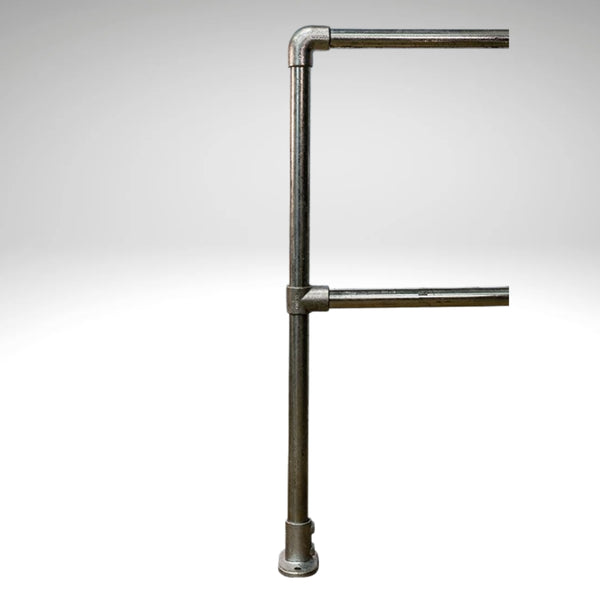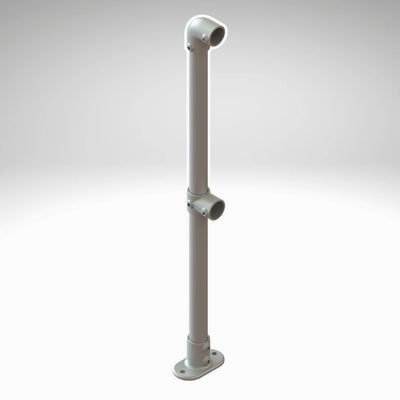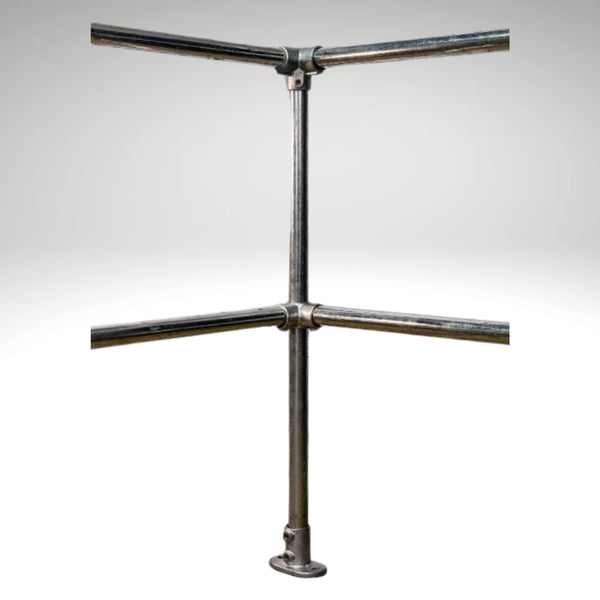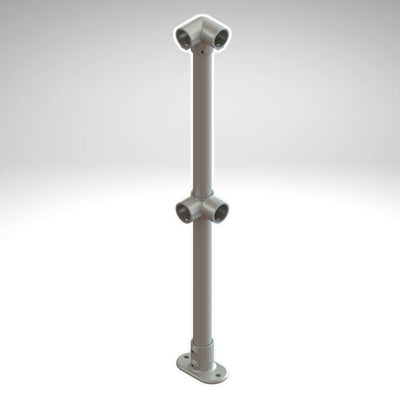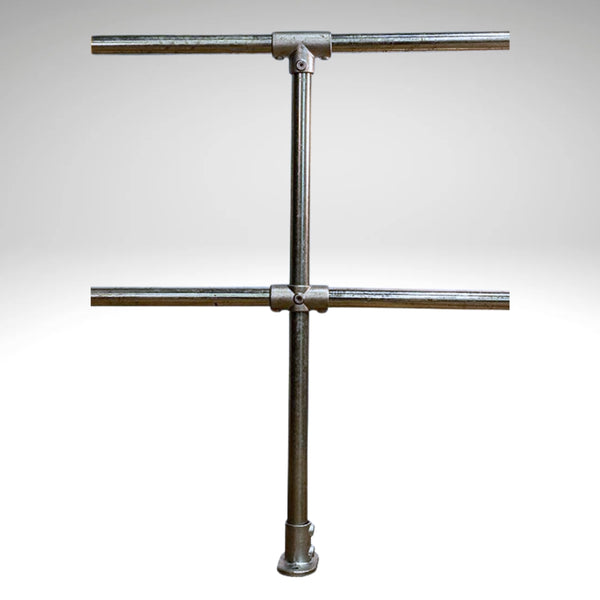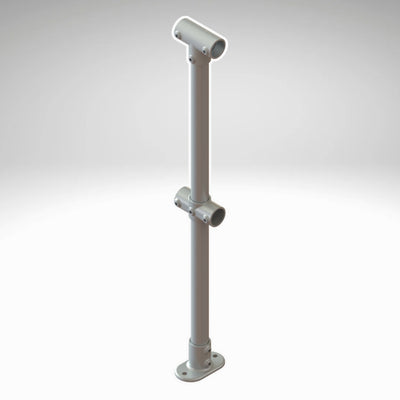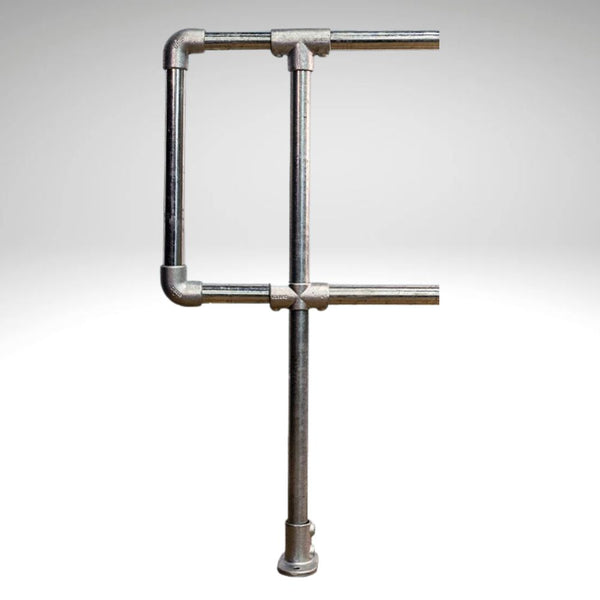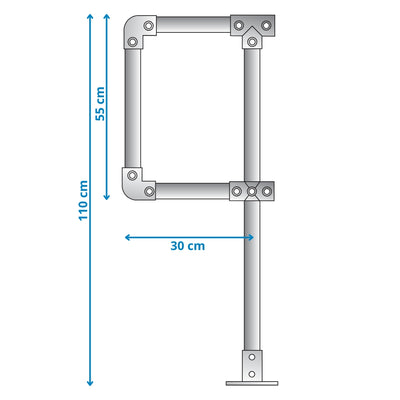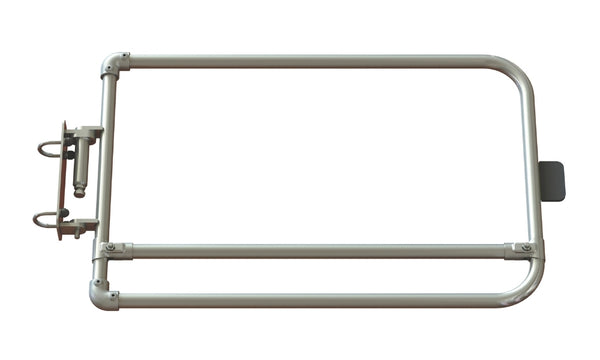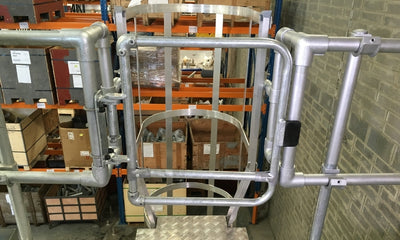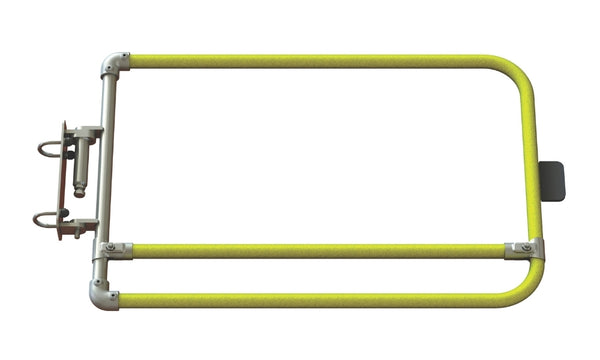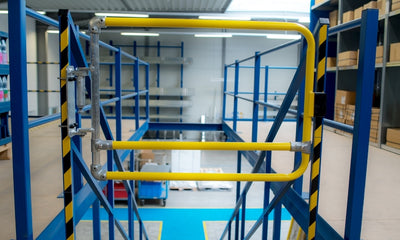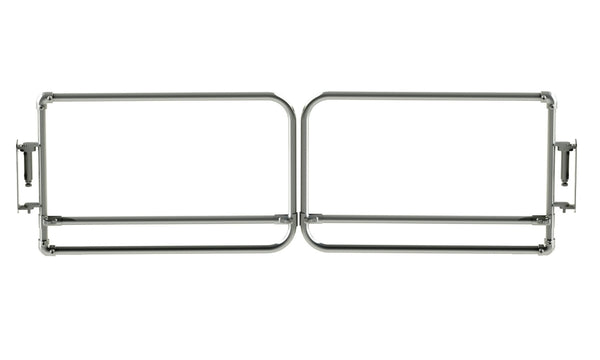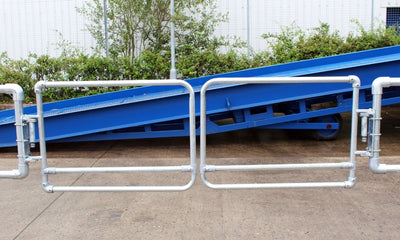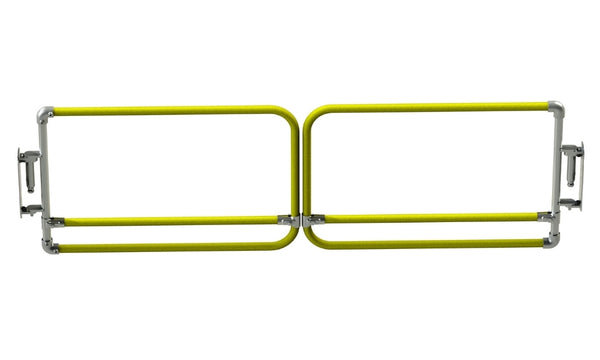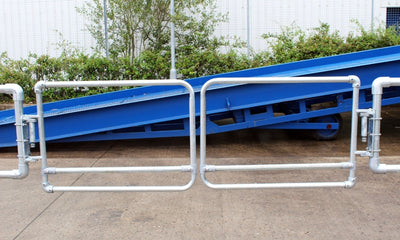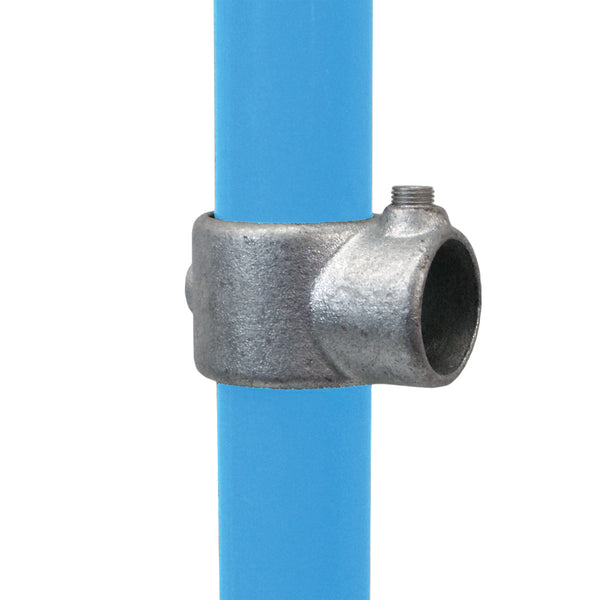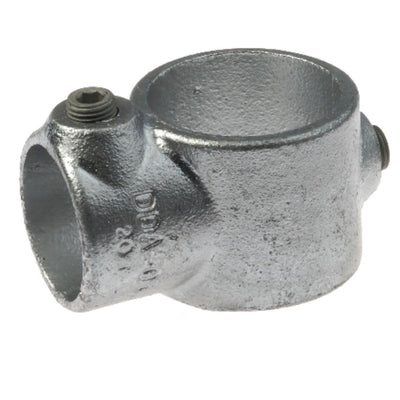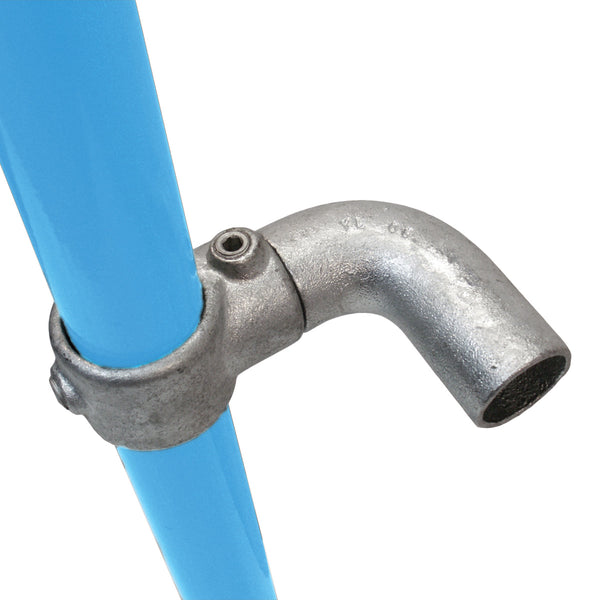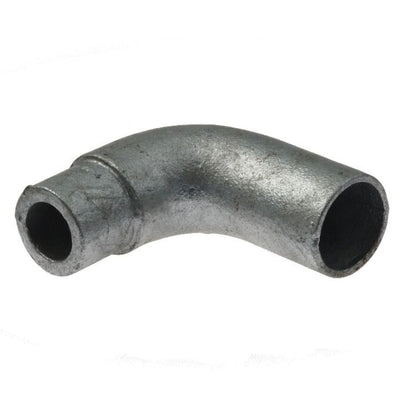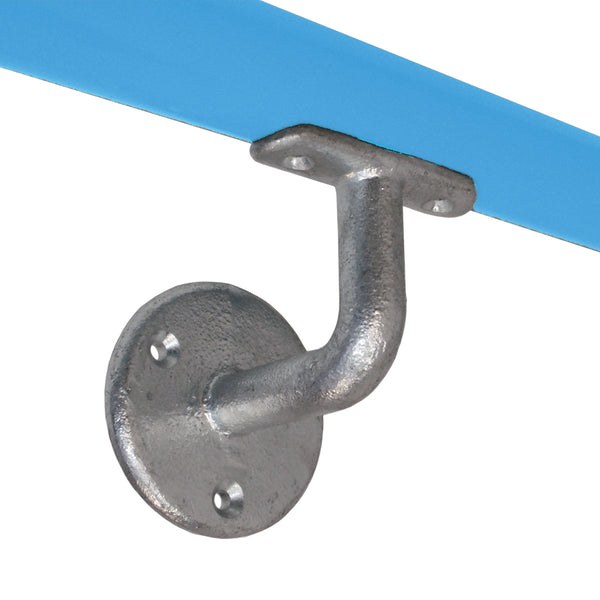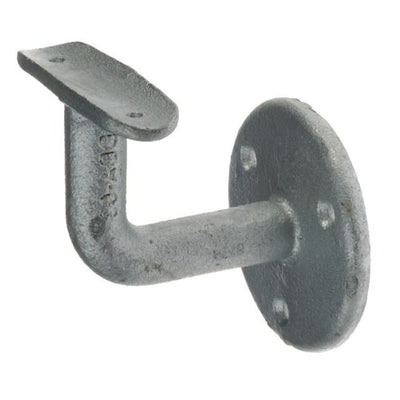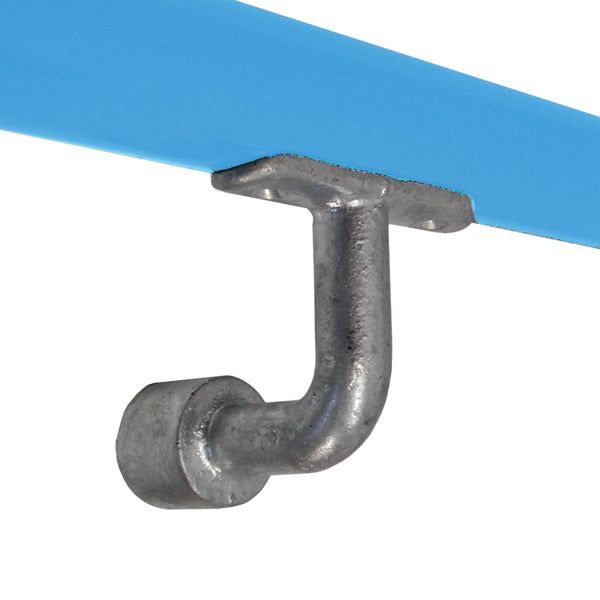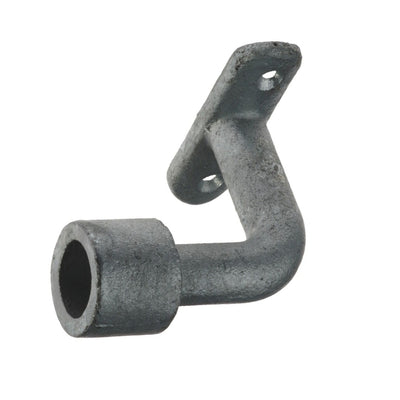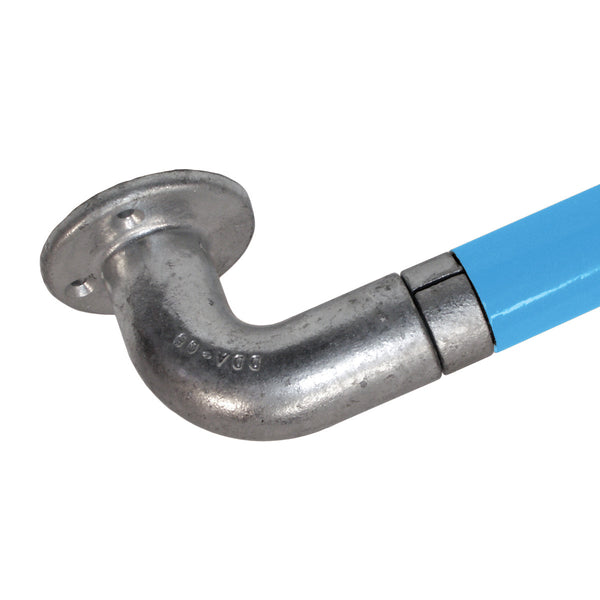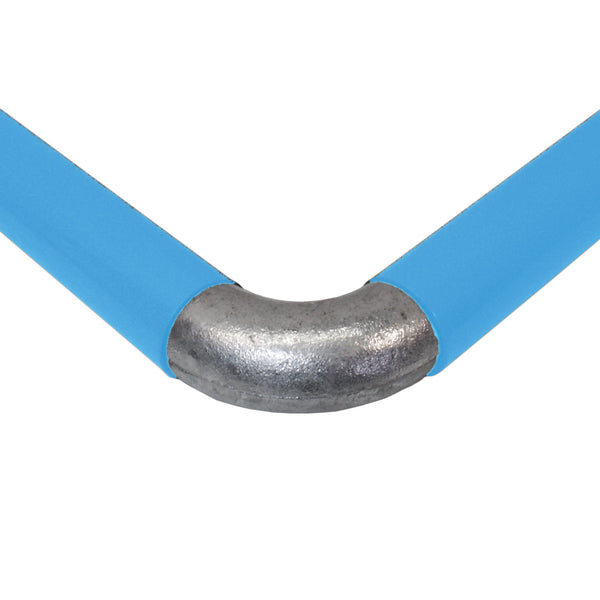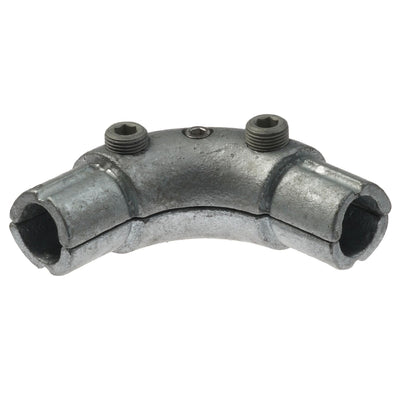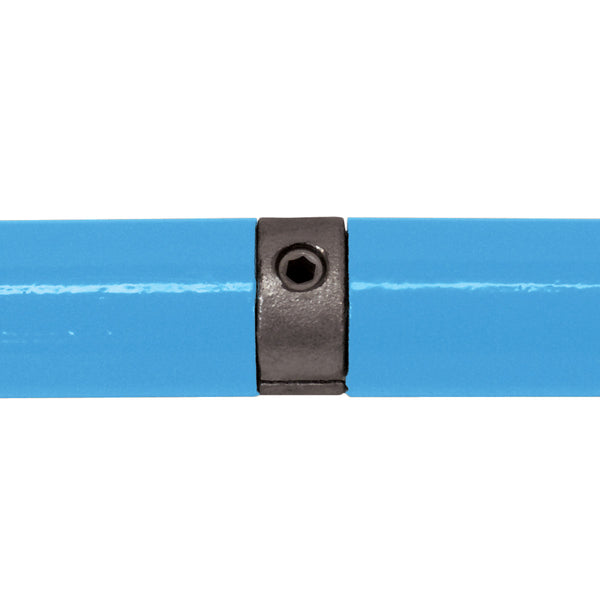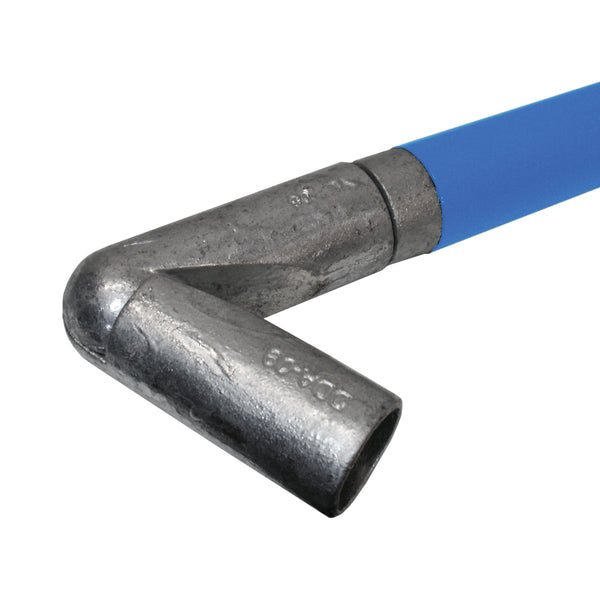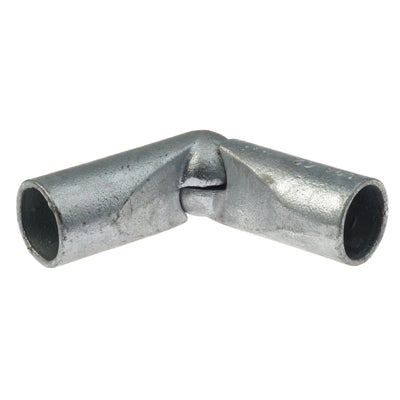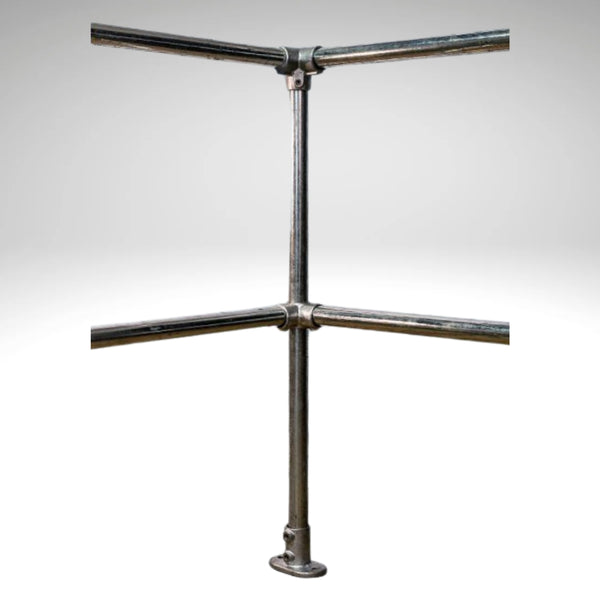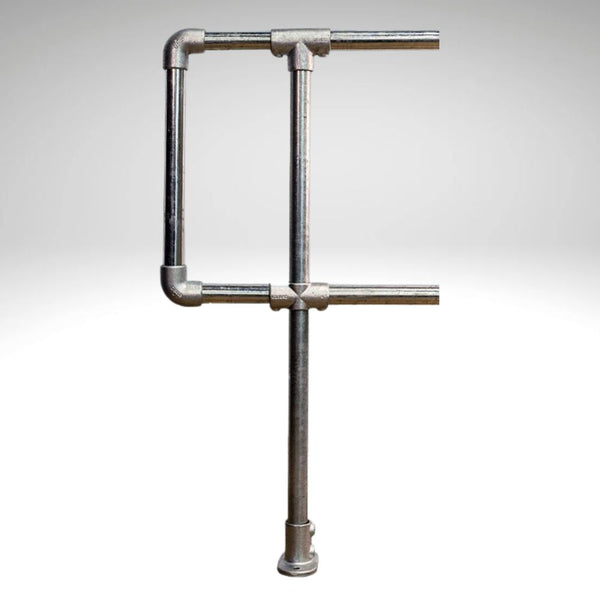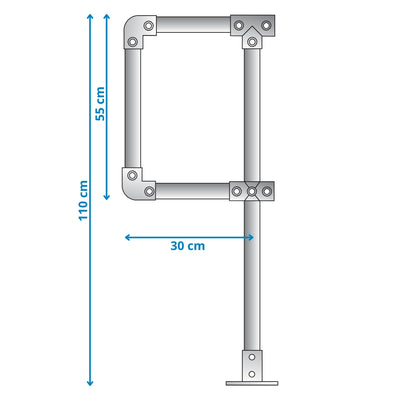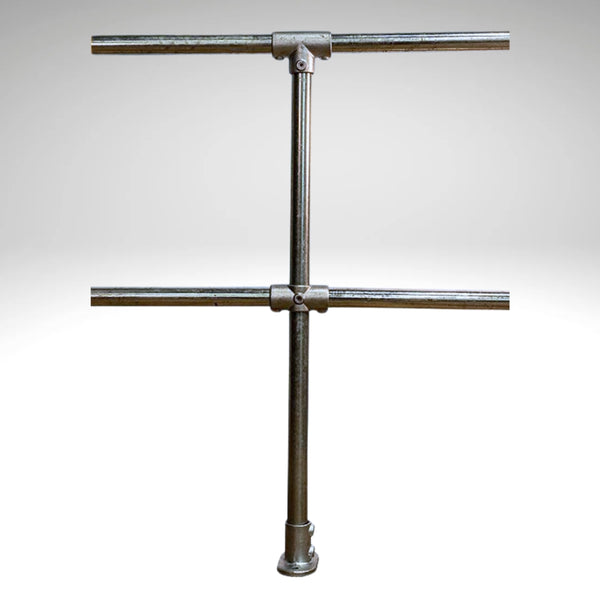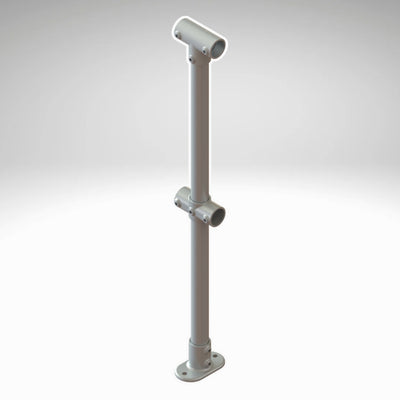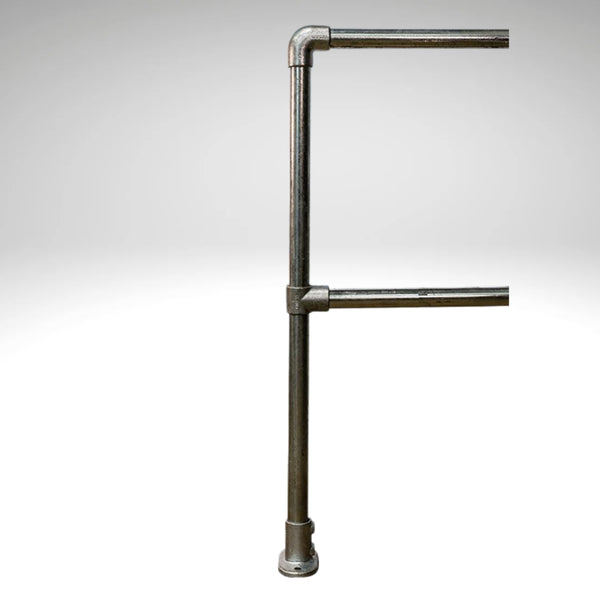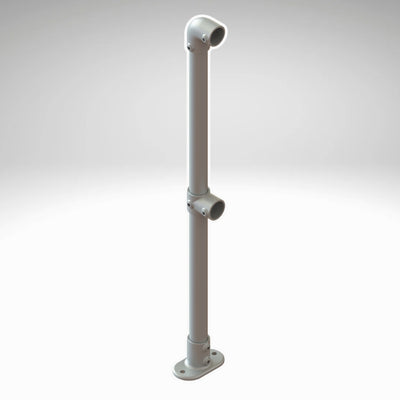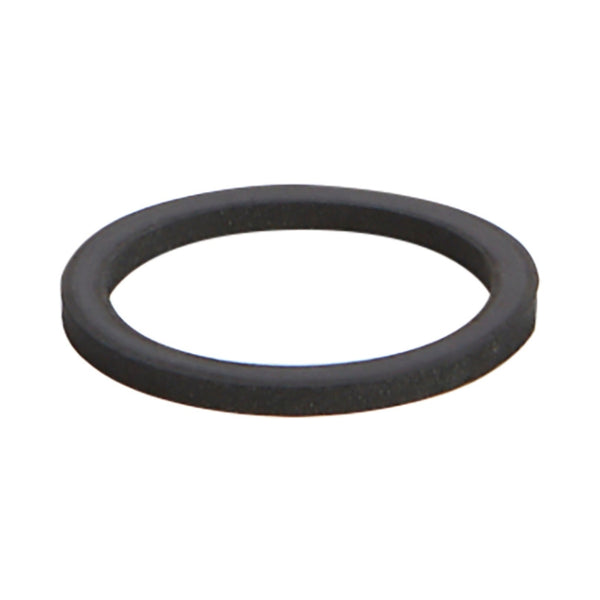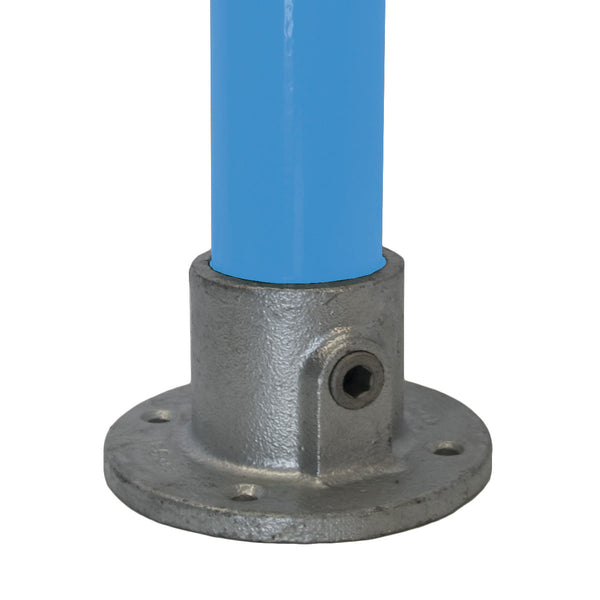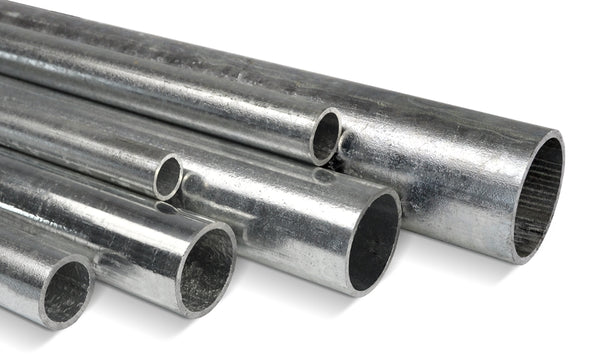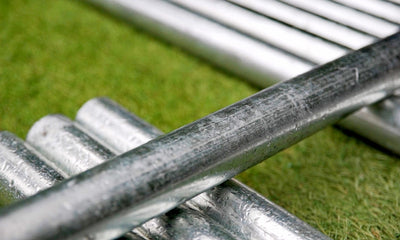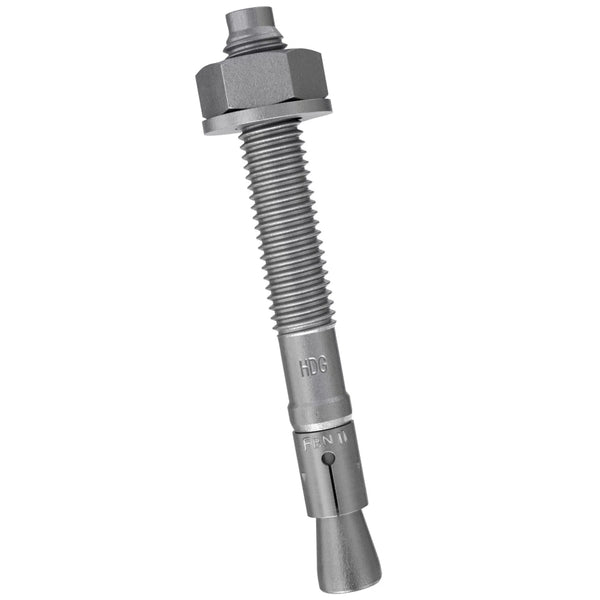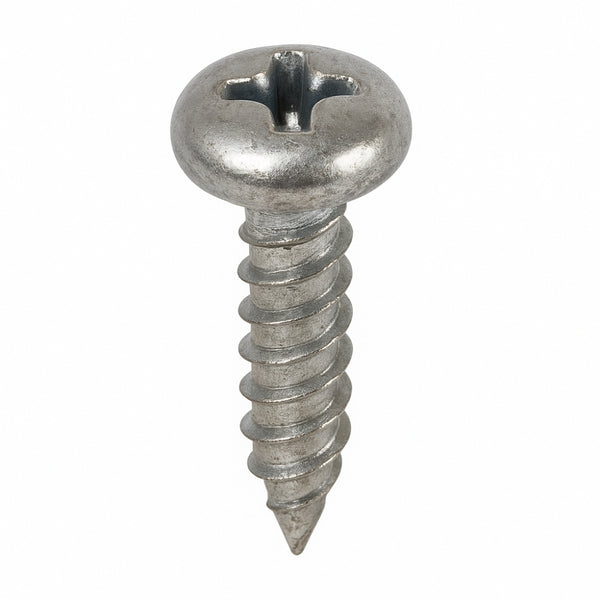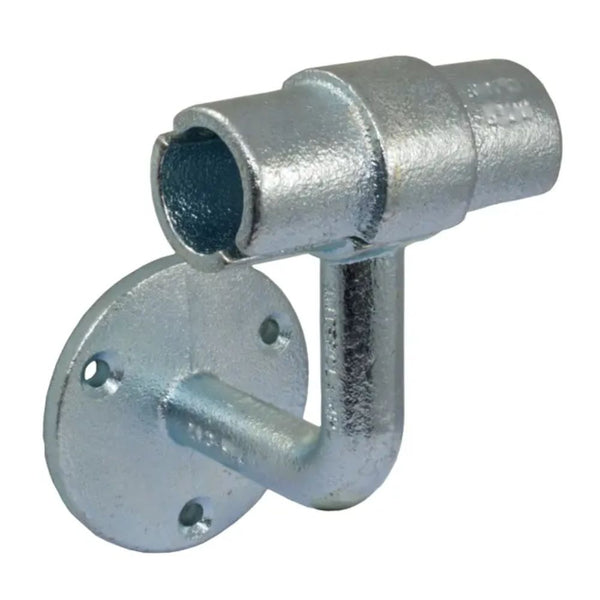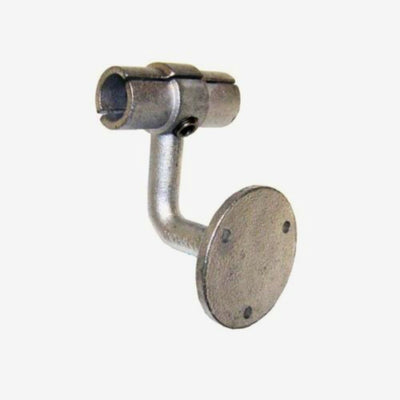In the realm of workplace safety, collective fall prevention stands as a paramount concern. Understanding the intricacies of collective fall prevention, particularly through the implementation of safety railing systems, is pivotal in fostering secure work environments. Safety railings serve as indispensable guardians, mitigating the risk of falls and ensuring the well-being of workers across various industries.
Understanding Collective Fall Prevention
Collective fall prevention entails the implementation of measures designed to safeguard individuals from the perils of falls in shared spaces. It encompasses a spectrum of strategies aimed at minimizing the likelihood of accidents occurring due to elevated work conditions. Safety railing emerges as a cornerstone in this pursuit, offering a physical barrier that acts as a formidable deterrent against falls.
Importance of Safety Railing
The significance of safety railing cannot be overstated in the realm of collective fall prevention. Beyond merely meeting regulatory requirements, safety railings epitomize a proactive approach to workplace safety. By delineating safe zones and demarcating hazardous areas, safety railings foster an environment conducive to accident avoidance.
Types of Collective Fall Prevention Systems
Safety railing systems manifest in diverse forms, each tailored to address specific safety needs and structural considerations. From traditional guardrails to innovative safety barriers, the array of options ensures versatility in safeguarding personnel across various settings.
Regulatory Compliance and Standards
Ensuring adherence to regulatory standards is paramount in the deployment of safety railing systems. Organizations must navigate a labyrinth of guidelines set forth by regulatory bodies such as OSHA, ANSI, and European Norms (EN) to guarantee the efficacy and legality of their safety measures.
OSHA (Occupational Safety and Health Administration) Guidelines
OSHA, as the vanguard of workplace safety regulations in the United States, mandates stringent guidelines concerning fall prevention measures. Compliance with OSHA standards not only fosters a safe working environment but also shields organizations from potential legal repercussions.
ANSI (American National Standards Institute) Standards
The ANSI plays a pivotal role in shaping safety standards, encompassing a comprehensive framework for the design and installation of safety railing systems. Adhering to ANSI standards ensures a uniform approach to fall prevention, bolstering safety protocols across industries.
European Norms (EN) for Safety Railing
In the European Union, adherence to EN standards is indispensable for organizations seeking to ensure the safety and well-being of their workforce. EN norms provide a harmonized approach to safety railing specifications, fostering consistency and compatibility across member states.
Applications of Safety Railing
Safety railing finds application across a myriad of environments, catering to the distinct safety needs of diverse industries and settings.
Construction Sites
Construction sites epitomize dynamic work environments fraught with potential hazards. Safety railing serves as a stalwart guardian, providing workers with a secure perimeter and peace of mind amid the rigors of construction activities.
Industrial Facilities
Within industrial settings, safety railing assumes a pivotal role in safeguarding personnel against falls from elevated platforms, walkways, and machinery. By delineating restricted areas and enforcing safe practices, safety railing fosters a culture of safety paramount to industrial operations.
Commercial Buildings
In commercial establishments, safety railing not only ensures compliance with regulatory mandates but also enhances the aesthetic appeal of architectural spaces. Balancing functionality with design, safety railing seamlessly integrates into commercial environments, promoting safety without compromising on visual appeal.
Residential Areas
Even within residential settings, safety railing holds sway in enhancing home safety and accessibility. Whether adorning staircases, balconies, or terraces, safety railing imbues residential spaces with an added layer of security, safeguarding inhabitants against accidental falls.
Benefits of Collective Fall Prevention Systems
The implementation of collective fall prevention systems yields a myriad of benefits, extending beyond mere accident avoidance to encompass broader organizational advantages.
Accident Prevention
Foremost among these benefits is the tangible reduction in accidents resulting from falls. Safety railing serves as a proactive barrier, preempting potential mishaps and averting the associated human and financial costs.
Liability Reduction
By prioritizing workplace safety through the deployment of safety railing systems, organizations mitigate the risk of liability stemming from occupational accidents. Proactive safety measures not only safeguard personnel but also shield organizations from legal entanglements and reputational damage.
Improved Workplace Safety Culture
Furthermore, the cultivation of a robust safety culture emerges as a byproduct of collective fall prevention efforts. Safety railing symbolizes a commitment to employee well-being, fostering a workplace ethos centered on accountability, vigilance, and mutual care.
How to Choose the Right Safety Railing System
Selecting the appropriate safety railing system necessitates a methodical approach, informed by a thorough understanding of site-specific requirements and logistical considerations.
Assessing Site Requirements
Conducting a comprehensive assessment of site conditions is paramount in determining the optimal safety railing solution. Factors such as layout, terrain, and operational dynamics must be carefully evaluated to ensure the efficacy and compatibility of the chosen system.
Budget Considerations
Balancing safety imperatives with budgetary constraints is a perennial challenge faced by organizations seeking to invest in safety railing systems. By aligning investment decisions with risk assessments and long-term safety goals, organizations can optimize their expenditure without compromising on safety standards.
Maintenance Needs
Anticipating the maintenance requirements of safety railing systems is essential in sustaining their efficacy over time. Regular inspection, upkeep, and repairs are integral facets of a proactive maintenance regimen aimed at preserving the integrity and functionality of safety railing installations.
Frequently Asked Questions (FAQs)
Addressing common queries and concerns surrounding safety railing systems helps dispel misconceptions and empower stakeholders with actionable insights.
What are the height requirements for safety railings?
The height requirements for safety railings are contingent upon various factors, including regulatory standards, industry best practices, and site-specific considerations. In general, safety railings should be of sufficient height to prevent accidental falls while accommodating safe access and egress.
Can safety railings be installed on uneven surfaces?
Yes, safety railings can be installed on uneven surfaces through the use of adjustable mounting brackets, custom fabrication, or structural adaptations. Ensuring a level and stable installation is essential in maximizing the efficacy and stability of safety railing systems.
Are there regulations regarding the spacing of railings?
Yes, regulatory standards stipulate guidelines concerning the spacing of railings to prevent the passage of objects or the entrapment of individuals. Adherence to prescribed spacing requirements is essential in optimizing the safety and functionality of safety railing installations.
Conclusion
In conclusion, collective fall prevention through the deployment of safety railing systems represents a proactive stance towards workplace safety. By adhering to regulatory standards, leveraging best practices, and prioritizing employee well-being, organizations can foster secure work environments conducive to productivity, efficiency, and peace of mind.
Recap of Key Points
- Safety railing serves as a cornerstone of collective fall prevention, offering a robust barrier against the perils of elevated work conditions.
- Regulatory compliance with standards set forth by OSHA, ANSI, and European Norms (EN) is essential in ensuring the efficacy and legality of safety railing systems.
- Safety railing finds application across diverse industries and settings, catering to the unique safety needs of construction sites, industrial facilities, commercial buildings, and residential areas.
- The implementation of collective fall prevention systems yields a myriad of benefits, including accident prevention, liability reduction, and the cultivation of a robust safety culture.
- Selecting the right safety railing system entails a methodical approach informed by site-specific requirements, budget considerations, and maintenance needs.
We invite you to explore our comprehensive collection of safety railing systems
